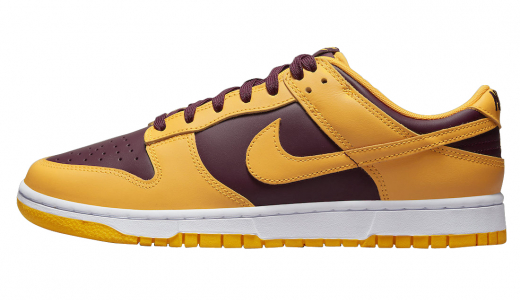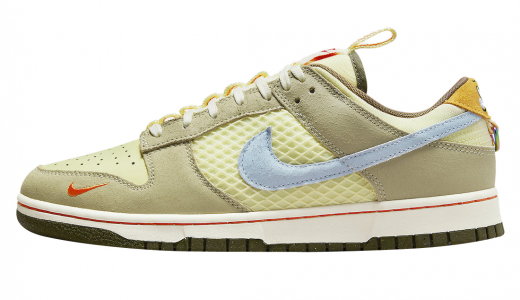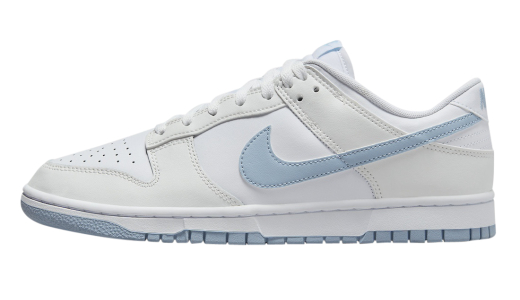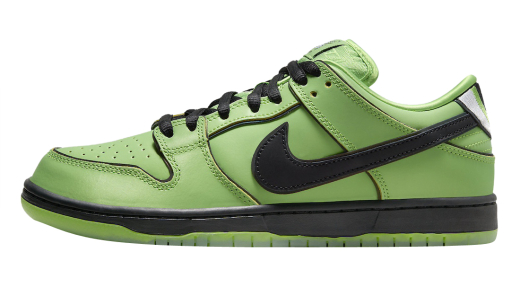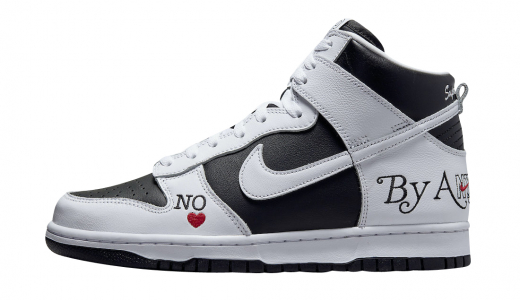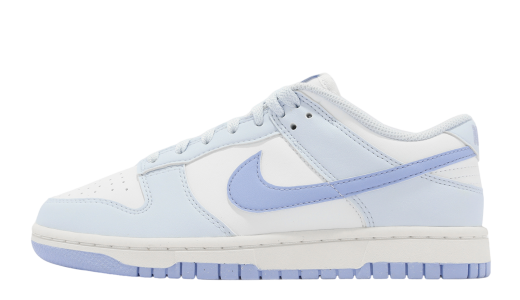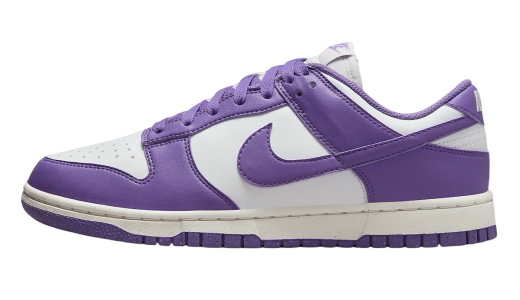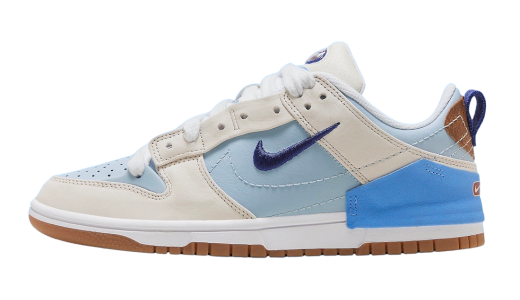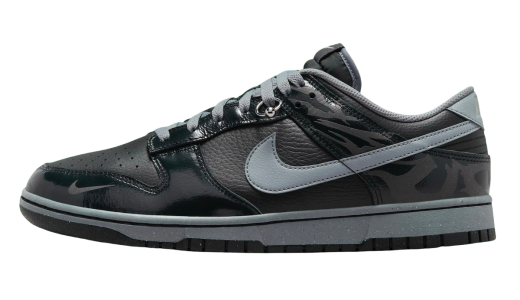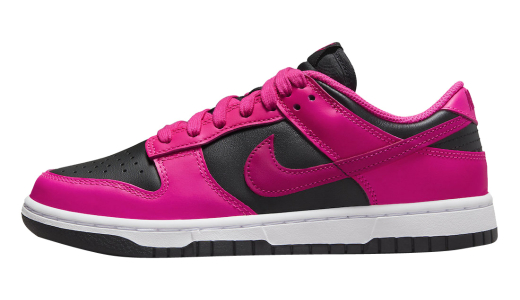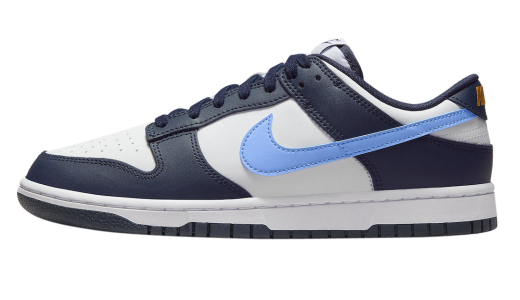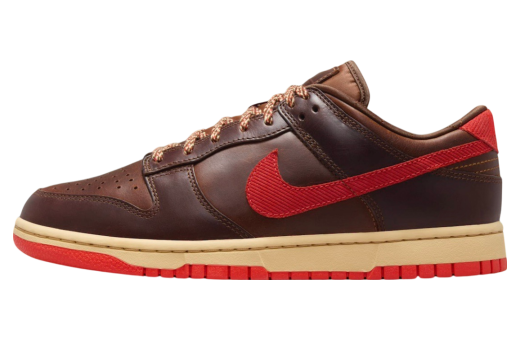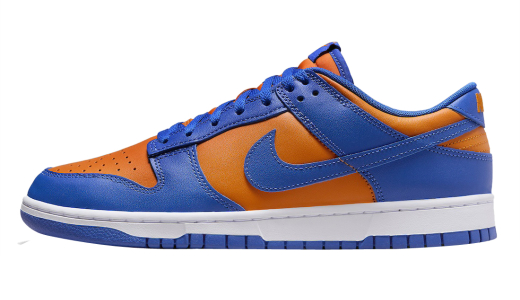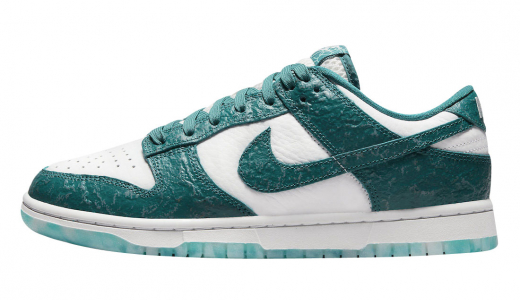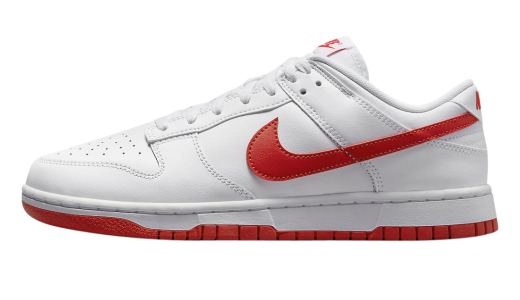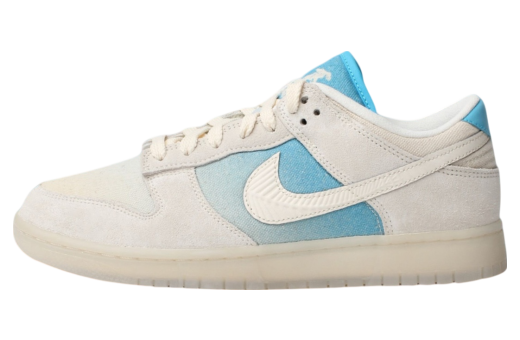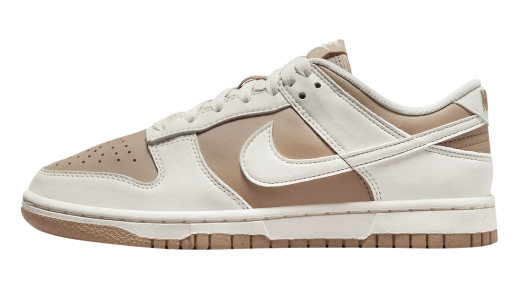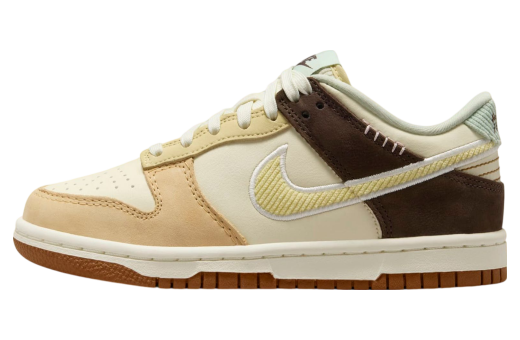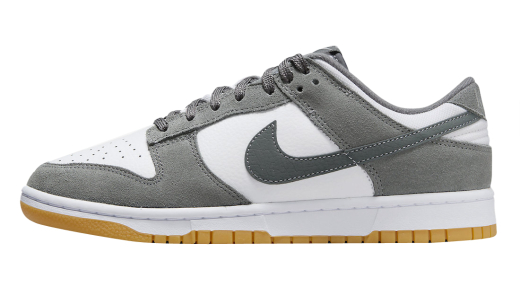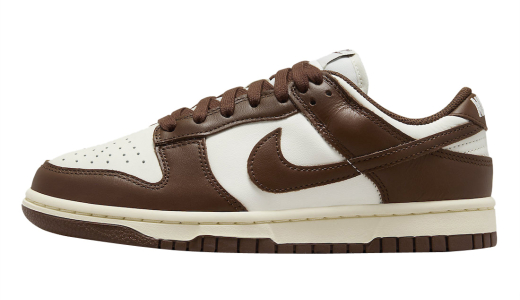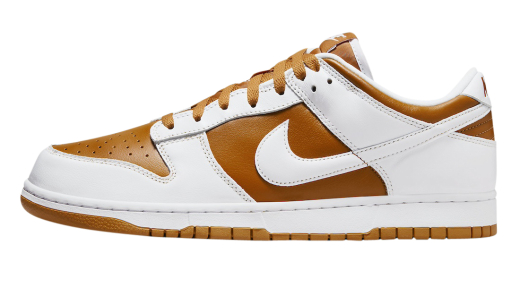Nike Dunk
The Nike Dunk, originally released in 1985, has become a timeless icon in the world of athletic footwear. Initially introduced as a basketball shoe, the Dunk was designed to provide stability and flexibility for college athletes participating in the NCAA league. Its release was heavily promoted through the "Be True to Your School" campaign, which emphasized the shoe's distinct team colorways, allowing fans and players to proudly display their school spirit. Throughout the years, the Dunk's simple yet effective design has made it a favorite not only among athletes but also among skaters and sneaker enthusiasts. The shoe features a high-top silhouette with a padded collar for ankle support and a durable leather upper for long-lasting wear, making it both functional and stylish.
In recent years, the Nike Dunk has experienced a resurgence in popularity, driven largely by collaborations with prominent designers, artists, and brands. These limited-edition releases have garnered significant attention and have made the Dunk a coveted item in the sneaker community. High-profile partnerships with entities such as Off-White, Travis Scott, and Supreme have brought fresh and innovative designs to the silhouette, blending contemporary fashion with the shoe's classic elements. Furthermore, the influence of social media and the sneaker culture's growing presence online have propelled the Dunk into the mainstream, making it a staple in streetwear fashion. Despite its evolving iterations, the Nike Dunk remains true to its roots, maintaining a legacy that bridges multiple generations of style and sport.
History of Nike Dunk
The History of Nike Dunk: A Cultural Icon
The Nike Dunk, a sneaker that holds a special place in the annals of athletic and fashion history, is more than just a shoe. It’s a cultural phenomenon that bridges the worlds of basketball, skateboarding, fashion, and streetwear. From its inception in the mid-1980s to its resurgence in contemporary street culture, the Nike Dunk has had a complex and fascinating trajectory. This history covers its genesis, evolution, and ongoing legacy.
1. Inception and Early Years (1985-1990): The Basketball Shoe
The story of the Nike Dunk begins in 1985. Designed by Peter Moore, who also played a pivotal role in creating the Air Jordan 1, the Dunk was introduced as a basketball shoe. It came out in an era when collegiate basketball was skyrocketing in popularity, and Nike capitalized on this by launching the "Be True to Your School" campaign. This campaign featured the Dunk in colors that matched some of the top college basketball teams, such as the University of Michigan, University of Kentucky, and University of Iowa.
The Dunk's original design was quite similar to the Air Jordan 1, which also debuted in 1985. Both shoes featured a high-top silhouette, leather uppers, and a cushioned sole designed for better performance on the basketball court. However, what set the Dunk apart was its broader, more inclusive color palette that mirrored the vibrancy of college basketball team uniforms. The Dunk was not initially a commercial success, in part because it faced stiff competition from the Air Jordan 1, but it did gain a loyal following among college basketball players and fans.
2. The Forgotten Years (1991-1997): Diminishing Appeal
The early 1990s were a turbulent time for the Nike Dunk. With the advent of more advanced basketball footwear technology and high-profile marketing campaigns for other models like the Air Max series and subsequent Air Jordan releases, the Dunk gradually faded into the background. The shoe was hardly discontinued but certainly sidelined. Very few new colorways were released, and the Dunk became a sort of "cult classic" among sneaker aficionados, retaining a devoted but small fan base.
3. The Skateboarding Revival (1998-2002): SB Dunk Era Begins
In the late 1990s, the skateboarding culture was experiencing a renaissance, and it inadvertently paved the way for the Dunk's resurgence. Skaters were initially drawn to the Nike Dunk for its sturdy build, good grip, and relatively affordable price. Recognizing this emerging trend, Sandy Bodecker, a visionary within Nike, spearheaded a campaign to rebrand the Dunk as a skateboarding shoe.
In 2002, Nike officially launched the SB (Skateboarding) line, and the SB Dunk was born. These were modified Dunks with features tailored to skateboarding needs, such as a padded tongue for added comfort, enhanced insole cushioning, and Zoom Air insoles. The Dunk SB quickly became a staple among skateboarders, thanks in part to collaborations with skate shops and influential skateboarders like Danny Supa and Richard Mulder.
4. Cultural Resurgence and Collaborations (2003-2008): Limited Edition Craze
During the mid-2000s, the Nike Dunk witnessed its most explosive phase of growth, driven by a unique combination of limited releases and high-profile collaborations. Nike adopted a strategy of releasing limited edition Dunks in collaboration with various artists, brands, and cultural icons.
One of the most notable early collaborations was with street artist Futura and streetwear brands like Supreme. The 2003 release of the Supreme x Nike SB Dunk Low, featuring a faux crocodile skin pattern and a red and white colorway reminiscent of the Air Jordan 3, sent demand for the shoe skyrocketing. The connection to Supreme, a brand at the epicenter of streetwear culture, helped catapult the Dunk to iconic status.
This period also saw the release of highly coveted Dunks such as the Tiffany Dunk Low in collaboration with Diamond Supply Co., and the Pigeon Dunk by Jeff Staple. The latter caused a near riot in New York City upon its release in 2005, with only 150 pairs made available. These limited releases and the hysteria they generated shifted the Dunk from being merely a skateboarding shoe to a cultural icon coveted by collectors and fashion enthusiasts alike.
5. From Peaks to Troughs (2009-2018): Oscillating Popularity
After reaching its zenith in the mid-2000s, the popularity of the Nike Dunk began to wane as the sneaker market became saturated with numerous other releases. The rise of new technologies and models like the Nike Flyknit and Adidas' Boost technology captured consumer attention, while the Dunk started to feel less innovative in comparison.
However, Nike continued to release new iterations and collaborations, even if they didn't always capture the same level of mass hysteria. Special releases and retros continued to hold intrinsic value, especially among purists and skateboarders, but the Dunk's mainstream appeal was notably diluted.
The SB line tried to rejuvenate its offerings through collaborations with celebrities like rapper Travis Scott and skateboarding legend Eric Koston, keeping the Dunk relevant in niche markets while the mainstream audience moved on to newer trends and technologies.
6. The Modern Revival (2019-Present): A New Peak
The fortunes of the Nike Dunk began to change again around 2019, driven by a mix of nostalgic appeal and strategic collaborations. The rise of vintage streetwear culture, influenced by platforms like Instagram and Depop, made older models and colorways of the Dunk highly sought after. Celebrities like LeBron James and Travis Scott began frequently posting pictures donning various Dunk models, sparking renewed interest.
2020 was a watershed year for the Dunk. Collaborations with high-profile brands like Off-White, led by Virgil Abloh, and Dior ensured that the sneaker stayed in the spotlight. The Off-White x Nike Dunk Low "The 50" collection, featuring 50 unique colorways with Abloh's signature deconstructed aesthetic, became a massive hit. Similarly, the Ben & Jerry's Chunky Dunky, released in May 2020, was another audacious collaboration that fused pop culture and sneaker culture, generating immense hype and demand.
Nike also tapped into the nostalgia factor, re-releasing older, classic colorways and revisiting iconic themes. The original "Be True to Your School" pack saw a revival, allowing a new generation of sneaker enthusiasts to appreciate the design and history of the Dunk.
7. The Cultural Impact and Legacy: Beyond Footwear
The Nike Dunk's cultural footprint extends far beyond the realms of sports and fashion. It has become a symbol of collaboration, creativity, and community. Limited releases and collaborations have turned the Dunk into more than just a commodity; it has become a canvas for art and expression. The hyper-localized releases, often tied to specific skate shops or regions, foster a sense of community and exclusivity among sneaker collectors.
The Dunk also played a crucial role in the rise of sneaker culture as a mainstream phenomenon. By creating scarcity and leveraging influential figures and brands for collaborations, Nike set a blueprint that other companies now follow. The shoe has been a topic of discussion in various media outlets, from sneakerhead forums to high fashion magazines, further embedding it into multiple layers of contemporary culture.
8. Conclusion: The Ever-Evolving Icon
In many ways, the Nike Dunk is a testament to the power of adaptability and the importance of cultural relevance. It started as a basketball shoe, found a second life in skateboarding, and evolved into a global fashion icon. Its journey is filled with peaks and troughs, reinventions, and resurgences, much like any true cultural phenomenon. Even today, it stands as a beloved staple in the sneaker community, thanks to its rich history, collaborative designs, and timeless appeal.
The Dunk’s story is far from over. With every new release and reinterpretation, it continues to captivate and inspire, proving that a sneaker can transcend its functional origins to become a lasting cultural artifact. Whether you see it on a college basketball court, a skate park, or a fashion runway, the Nike Dunk remains a versatile and enduring symbol of style, sport, and subculture.
